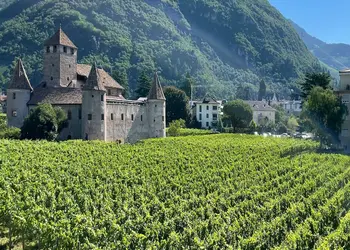Introduction
Embark on a captivating journey into the heart of nature, exploring the magic of Buší, untouched landscapes that weave stories of cultural richness and environmental resilience. In this extensive article, we delve deep into the wonders of Buší, unraveling its significance, ecological importance, and the challenges it faces across the globe.
Defining Buší:
Buší, derived from the Dutch word “bosch,” meaning forest, is a term that encapsulates natural landscapes untouched by significant human alterations. As we trace the evolution of this term, we discover its roots in cultural and linguistic diversity, reflecting the deep connection between humanity and the untamed wilderness.
Exploring Global Buší Regions:
Buší regions are scattered across the continents, presenting a diverse tapestry of ecosystems. From the tropical rainforests of Australia to the rugged terrains of Canada and Alaska, each region tells a unique story shaped by local climates, soils, and topographies. This section takes a detailed look at iconic B-uší regions, exploring their distinctive features and the flora and fauna that call them home.
Buší Tourism: Harmony and Challenges:
Economic Opportunities and Conservation Dilemmas:
Buší’s natural allure draws tourists seeking a connection with pristine landscapes. However, the surge in tourism poses challenges such as infrastructure strain and ecosystem disruption. This segment discusses the delicate balance between economic opportunities and conservation imperatives, presenting case studies of successful sustainable management practices.
The Many Faces of Buší:
Diverse Ecosystems:
Buší is not a one-size-fits-all concept. From tropical teeming with biodiversity to temperate woodlands experiencing distinct seasonal changes, this section provides an in-depth exploration of the various forms B-uší takes. Alpine, desert, and coastal B-uší unveil the intricate beauty of nature’s diverse expressions, fostering a deeper appreciation for the complexity of untamed landscapes.
Wildlife:
Habitats for Unique Species:
Buší regions serve as vital habitats for diverse plant and animal species, some of which face endangerment or extinction. This segment takes a closer look at the keystone species that rely on B-uší ecosystems for survival, emphasizing the interconnected web of life that these untamed landscapes sustain.
Cultural Connections:
Indigenous Perspectives and Traditions:
Buší is not only a physical environment but a cultural anchor for indigenous communities worldwide. This section delves into the profound connections between indigenous groups like Australian Aborigines and Canadian First Nations and their ancestral B-uší homelands. Explore the traditions, subsistence practices, and spiritual significance that make B-uší a cornerstone of cultural heritage.
Challenges to Buší:
Global Threats and Conservation Strategies:
Despite their resilience, Buší ecosystems face escalating threats from human activities. Resource extraction, urban development, invasive species, tourism pressures, and climate change are discussed in detail. The article explores urgent conservation strategies, emphasizing the need for indigenous-led stewardship, habitat restoration, and international cooperation to preserve these delicate ecosystems.
FAQs about Buší:
What is the origin of the term Buší?
The term Buší finds its roots in the Dutch word “bosch,” meaning forest. Over time, it has evolved to encompass natural landscapes untouched by significant human alterations.
How do different climates affect Buší regions?
The diversity of climates, from tropical to temperate, shapes the unique characteristics of Buší regions. Climate influences the types of vegetation, wildlife, and the overall ecological dynamics of each area.
What role do indigenous communities play in Buší conservation?
Indigenous communities are often the custodians of Buší regions, holding deep connections to the land. Many conservation efforts emphasize recognizing indigenous rights, supporting sustainable practices, and integrating traditional knowledge into modern conservation strategies.
How can tourism be both an opportunity and a challenge for Buší regions?
While tourism brings economic opportunities, unregulated influxes of visitors can strain infrastructure, disrupt ecosystems, and lead to cultural commodification. Sustainable tourism practices, including strict permits and codes of conduct, are crucial for maintaining the delicate balance.
What are the global threats to Buší, and how can they be mitigated?
Key threats include resource extraction, land development, invasive species, tourism pressures, and climate change. Mitigation strategies involve recognizing indigenous rights, expanding protected reserves, managing visitor impacts, restoring degraded habitats, and addressing climate change effects through rapid decarbonization.
Preserving Buší for Future Generations:
A Call to Action:
In this final segment, the article issues a call to action. As Buší regions diminish globally, the responsibility to preserve these natural wonders lies in collective understanding, responsible policies, and unified action. By supporting conservation initiatives, recognizing indigenous rights, and adopting sustainable practices, humanity can ensure a harmonious future where B-uší regions thrive.
Conclusion:
In the vast expanse of Buší, we discover more than untamed wilderness. We find stories of resilience, biodiversity, and cultural richness. As the world grapples with the diminishing expanses of B-uší, the choices we make today will shape the legacy we leave for generations to come. Join us in celebrating the brilliance of Buší and embracing the responsibility to protect these irreplaceable ecosystems.
